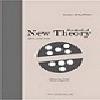A Classical and Bayesian Approach for Parameter Estimation in Structural Equation Models
Structural Equation Models (SEMs) with latent variables provide a general framework for modelling relationships in multivariate data. Although SEMs are most commonly used in studies involving intrinsically latent variables, such as happiness, quality of life, or stress, they also provide a parsimonious framework for covariance structure modelling. For this reason, they have become increasingly used outside of traditional social science applications. Frequentist inferences are based on point estimates and hypothesis tests for the measurement and latent variable parameters. Although most of the literature on SEMs is frequentist, Bayesian approaches have been proposed in the last years. This study aims to provide an easily accessible overview of a Classic and a Bayesian approach to SEMs. Due to the flexibility of the Bayesian approach, it is straightforward to apply the method in a comprehensive class of SEM-type modelling frameworks, allowing nonlinearity, interactions, missing data, mixed categorical, count, and continuous observed variables. The WinBUGS software package, which is freely available, can be used to implement Bayesian SEM analysis. Bayesian model fitting typically relies on MCMC, which involves simulating draws from the joint posterior distribution of the model unknowns (parameters and latent variables) through a computationally intensive procedure. The advantage of MCMC is that there is no need to rely on broad sample assumptions because exact posterior distributions can be estimated for any function of the model unknowns. In small to moderate samples, these exact posteriors can provide a more realistic measure of model uncertainty. Therefore, we use the MCMC method for the Bayesian approach in this study. All approaches given above are applied to the data obtained from Samsun Chamber of Commerce and Industry.
___
- K. A. Bollen, Structural Equations with Latent Variables, in Structural Equations with Latent Variables. Wiley: New York, (1989) 1-9.
- S. Wright, On The Nature of Size Factors. Genetics 3(4) (1918) 367-74.
- L. Wolfle, Sewall Wright on The Method of Path Coefficients: An Annotated Bibliography. Structural Equation Modeling-a Multidisciplinary Journal - STRUCT EQU MODELING 6 (1999) 280-291.
- J. O. Berger, Statistical Decision Theory and Bayesian Analysis. Springer Series in Statistics, New York: Springer-Verlag, 1985.
- J. M. Bernardo, A. F. M. Smith, Bayesian Theory. Wiley Series in Probability and Statistics, 1994.
- R. E. Kass, A. E. Raftery, Bayes Factors. Journal of The American Statistical Association 90(430) (1995) 773-795.
- A. E. Raftery, Bayesian Model Selection in Structural Equation Models. Sage Focus Editions 154 (1993) 163-180.
- S. Y. Lee, X. Y. Song, Hypothesis Testing and Model Comparison in Two-Level Structural Equation Models. Multivariate Behavioral Research 36(4) (2001) 639-655.
- K. Jedidi, H. S. Jagpal, W. S. DeSarbo, STEMM: A General Finite Mixture Structural Equation Model. Journal of Classification 14(1) (1997) 23-50.
- T. J. DiCiccio, R. E. Kass, A. Raftery, L. Wasseman, Computing Bayes Factors by Combining Simulation and Asymptotic Approximations. Journal of the American Statistical Association 92(439) (1997) 903-915.
- A. Gelman, X. L. Meng, Simulating Normalizing Constants: From Importance Sampling to Bridge Sampling to Path Sampling. Statistical Science (1998) 163-185.
- S. Y. Lee, Structural Equation Modeling: A Bayesian Approach. Chichester: John Wiley & Sons, 2007.
- Y. F. Wang, T. H. Fan, Bayesian Analysis of The Structural Equation Models with Application to a Longitudinal Myopia Trial. Statistics in Medicine 31(2) (2012) 188-200.
- R. Guo, H. Zhu, S. M. Chow, J. G. Ibrahim, Bayesian Lasso for Semiparametric Structural Equation Models. Biometrics 68(2) (2012) 567-577.
- U. Olsson, Maximum Likelihood Estimation of The Polychoric Correlation Coefficient. Psychometrika 44(4) (1979) 443-460.
- S. Y. Lee, W. Y. Poon, P. Bentler, Full Maximum Likelihood Analysis of Structural Equation Models with Polytomous Variables. Statistics & Probability Letters 9(1) (1990) 91-97.
- J. C. Westland, Lower Bounds on Sample Size in Structural Equation Modeling. Electronic Commerce Research and Applications 9(6) (2010) 476-487.
- K. G. Jöreskog, D. Sörbom, LISREL 8: Structural Equation Modeling with the SIMPLIS Command Language. Chicago, Ill.; Hillsdale, N.J.: SSI ; Erlbaum, Lawrence, Associates, 1996.
- L. K. Muthén, B. O. Muthén, Mplus User’s Guide. Los Angeles, CA: Muthén & Muthén, 2000.
- S. Y. Lee, W.Y. Poon, P. M. Bentler, A Two‐Stage Estimation of Structural Equation Models with Continuous and Polytomous Variables. British Journal of Mathematical and Statistical Psychology 48(2) (1995) 339-358.
- B. A. Reboussin, K. Y. Liang, An Estimating Equations Approach for the LISCOMP Model. Psychometrika 63(2) (1998) 165-182.
- J. Q. Shi, S.Y. Lee, Latent Variable Models with Mixed Continuous and Polytomous Data. Journal of the Royal Statistical Society: Series B (Statistical Methodology) 62(1) (2000) 77-87.
- S. Geman, D. Geman, Stochastic Relaxation, Gibbs Distributions, and the Bayesian Restoration of Images. IEEE Transactions on Pattern Analysis and Machine Intelligence PAMI-6(6) (1984) 721-741.
- N. Metropolis, A. W. Rosenbluth, M. N. Rosenbluth, A H. Teller, E. Teller, Equation of State Calculations by Fast Computing Machines. The Journal of Chemical Physics 21(6) (1953) 1087-1092.
- W. K. Hastings, Monte Carlo Sampling Methods Using Markov Chains and Their Applications. Biometrika 57(1) (1970) 97-109.
- Yayın Aralığı: 4
- Başlangıç: 2014
- Yayıncı: Naim Çağman
